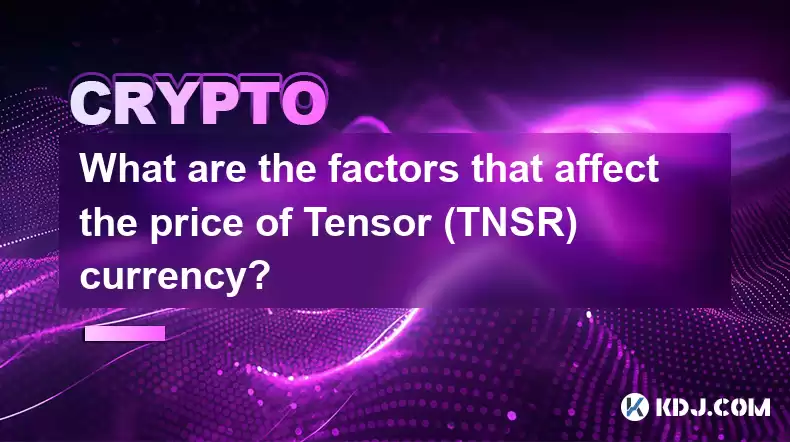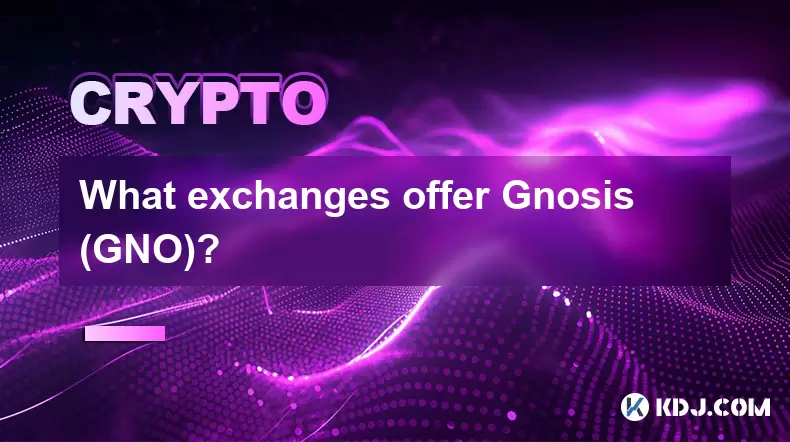-
 Bitcoin
Bitcoin $118600
-2.59% -
 Ethereum
Ethereum $4282
-0.42% -
 XRP
XRP $3.129
-4.21% -
 Tether USDt
Tether USDt $0.0000
0.01% -
 BNB
BNB $805.4
-1.80% -
 Solana
Solana $174.3
-5.77% -
 USDC
USDC $0.9998
-0.01% -
 Dogecoin
Dogecoin $0.2230
-6.33% -
 TRON
TRON $0.3466
1.70% -
 Cardano
Cardano $0.7745
-5.73% -
 Chainlink
Chainlink $21.37
-3.53% -
 Hyperliquid
Hyperliquid $42.93
-7.25% -
 Stellar
Stellar $0.4324
-4.94% -
 Sui
Sui $3.660
-7.17% -
 Bitcoin Cash
Bitcoin Cash $591.6
2.72% -
 Hedera
Hedera $0.2467
-7.04% -
 Ethena USDe
Ethena USDe $1.001
0.00% -
 Avalanche
Avalanche $22.92
-6.14% -
 Litecoin
Litecoin $118.8
-3.79% -
 Toncoin
Toncoin $3.378
-0.46% -
 UNUS SED LEO
UNUS SED LEO $9.011
-1.15% -
 Shiba Inu
Shiba Inu $0.00001294
-5.81% -
 Uniswap
Uniswap $11.24
0.53% -
 Polkadot
Polkadot $3.870
-6.16% -
 Cronos
Cronos $0.1662
-1.68% -
 Dai
Dai $1.000
0.02% -
 Ethena
Ethena $0.7915
-5.62% -
 Bitget Token
Bitget Token $4.414
-1.65% -
 Monero
Monero $259.3
-3.85% -
 Pepe
Pepe $0.00001120
-8.29%
What are the factors that affect the price of Tensor (TNSR) currency?
TNSR's price is primarily driven by supply and demand dynamics, influenced by factors such as project progress, market sentiment, competition, and regulatory developments.
Jan 01, 2025 at 05:17 am

Key Points:
- Supply and demand
- Market sentiment
- Project development
- Regulatory environment
- Competition
Article Content:
Supply and Demand
The fundamental driver of price for Tensor (TNSR) currency, like any other asset, is the balance between supply and demand. If there is a greater demand for TNSR relative to its supply, the price will tend to rise. Conversely, if supply exceeds demand, the price will tend to fall.
Factors that influence demand include confidence in the project, perceived utility of the token, and speculation. Factors that impact supply include token issuance rates, burning mechanisms, and circulation.
Market Sentiment
Market sentiment plays a significant role in determining the price of TNSR. Positive sentiment, such as enthusiasm for the project, can lead to increased demand and higher prices. Negative sentiment, such as concerns over project delays or security risks, can dampen demand and cause prices to fall.
Market sentiment is influenced by a variety of factors, including media coverage, social media buzz, and technical analysis.
Project Development
The progress and success of the Tensor project have a direct impact on TNSR price. Positive updates about project development, such as new partnerships or technological advancements, can boost confidence and attract buyers. Conversely, setbacks or delays can erode confidence and lead to selling pressure.
Documentation, roadmap, and team composition are all factors that contribute to project perception.
Regulatory Environment
Regulatory developments can have a significant impact on the price of TNSR. Clear and supportive regulations can provide stability and encourage investment. Uncertainty or negative regulation can create fear, uncertainty, and doubt (FUD), leading to selling pressure.
Regulatory clarity provides guidance for market participants and reduces risk.
Competition
The competitive landscape for Tensor and its underlying blockchain technology can influence the price of TNSR. Strong competition from similar projects can erode market share and limit growth potential. Conversely, a unique and innovative position in the market can attract investors and support higher prices.
Market dominance, technological differentiation, and competitive advantage are important considerations.
FAQs:
- What is the maximum supply of TNSR tokens?
The maximum supply of TNSR tokens is set at 1 billion tokens.
- What is the current circulation supply of TNSR tokens?
The current circulation supply of TNSR tokens is approximately 400 million tokens.
- What is the role of the TNSR token in the Tensor ecosystem?
TNSR is the native token of the Tensor blockchain. It is used for transaction fees, gas costs, and staking rewards.
- Can TNSR tokens be mined?
TNSR tokens cannot be mined. They are distributed through a combination of token sales and staking rewards.
- What factors are most likely to drive TNSR price higher in the future?
Positive factors that could drive TNSR price higher include:
* Increased adoption of the Tensor blockchain
* New partnerships and integrations
* Technological advancements
* Supportive regulatory environment
* Growing demand for privacy-focused cryptocurrenciesDisclaimer:info@kdj.com
The information provided is not trading advice. kdj.com does not assume any responsibility for any investments made based on the information provided in this article. Cryptocurrencies are highly volatile and it is highly recommended that you invest with caution after thorough research!
If you believe that the content used on this website infringes your copyright, please contact us immediately (info@kdj.com) and we will delete it promptly.
- Dogecoin, Presale, Surge: Riding the Meme Coin Wave
- 2025-08-12 11:10:12
- Dogecoin, Tron, and the ROI Reality Check: What's a Crypto Investor to Do?
- 2025-08-12 11:15:12
- Ethereum Layer-2 Scaling Competition Heats Up as ETH Breaks $4K
- 2025-08-12 10:30:12
- China Regulation, Stablecoins, and BNB Presale: Navigating the Crypto Landscape
- 2025-08-12 11:30:12
- Meme Coins, Investment, and Token Burns: What's Hot in 2025?
- 2025-08-12 10:30:12
- China's National Security Alarm Bells Ring Over Worldcoin's Iris Scans
- 2025-08-12 11:35:12
Related knowledge

How to purchase Aragon (ANT)?
Aug 09,2025 at 11:56pm
Understanding Aragon (ANT) and Its PurposeAragon (ANT) is a decentralized governance token that powers the Aragon Network, a platform built on the Eth...

Where to trade Band Protocol (BAND)?
Aug 10,2025 at 11:36pm
Understanding the Role of Private Keys in Cryptocurrency WalletsIn the world of cryptocurrency, a private key is one of the most critical components o...

What is the most secure way to buy Ocean Protocol (OCEAN)?
Aug 10,2025 at 01:01pm
Understanding Ocean Protocol (OCEAN) and Its EcosystemOcean Protocol (OCEAN) is a decentralized data exchange platform built on blockchain technology,...

Where can I buy UMA (UMA)?
Aug 07,2025 at 06:42pm
Understanding UMA and Its Role in Decentralized FinanceUMA (Universal Market Access) is an Ethereum-based decentralized finance (DeFi) protocol design...

What exchanges offer Gnosis (GNO)?
Aug 12,2025 at 12:42pm
Overview of Gnosis (GNO) and Its Role in the Crypto EcosystemGnosis (GNO) is a decentralized prediction market platform built on the Ethereum blockcha...

How to buy Storj (STORJ) tokens?
Aug 09,2025 at 07:28am
Understanding Storj (STORJ) and Its Role in Decentralized StorageStorj is a decentralized cloud storage platform that leverages blockchain technology ...

How to purchase Aragon (ANT)?
Aug 09,2025 at 11:56pm
Understanding Aragon (ANT) and Its PurposeAragon (ANT) is a decentralized governance token that powers the Aragon Network, a platform built on the Eth...

Where to trade Band Protocol (BAND)?
Aug 10,2025 at 11:36pm
Understanding the Role of Private Keys in Cryptocurrency WalletsIn the world of cryptocurrency, a private key is one of the most critical components o...

What is the most secure way to buy Ocean Protocol (OCEAN)?
Aug 10,2025 at 01:01pm
Understanding Ocean Protocol (OCEAN) and Its EcosystemOcean Protocol (OCEAN) is a decentralized data exchange platform built on blockchain technology,...

Where can I buy UMA (UMA)?
Aug 07,2025 at 06:42pm
Understanding UMA and Its Role in Decentralized FinanceUMA (Universal Market Access) is an Ethereum-based decentralized finance (DeFi) protocol design...

What exchanges offer Gnosis (GNO)?
Aug 12,2025 at 12:42pm
Overview of Gnosis (GNO) and Its Role in the Crypto EcosystemGnosis (GNO) is a decentralized prediction market platform built on the Ethereum blockcha...

How to buy Storj (STORJ) tokens?
Aug 09,2025 at 07:28am
Understanding Storj (STORJ) and Its Role in Decentralized StorageStorj is a decentralized cloud storage platform that leverages blockchain technology ...
See all articles

























































































